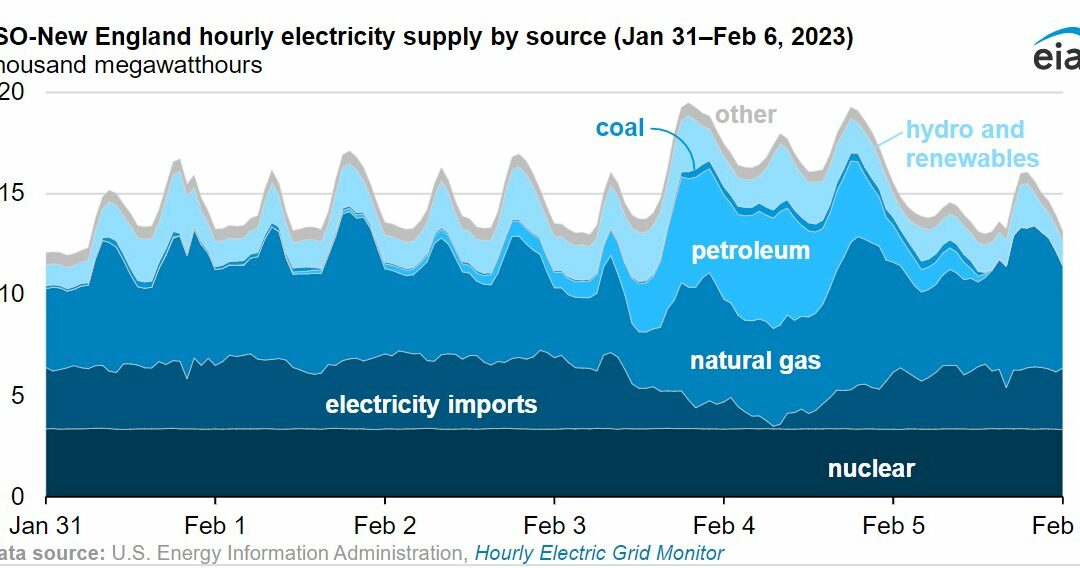During the brutal cold that hit last weekend (my house got down to minus-19, coldest in my three decades here), the dirtiest fuels were important in keeping the New England grid going, says the US Energy Information Agency.
To help meet demand, grid operators called on power plants that aren’t typically used, including more than 5,000 megawatts (MW) of oil-fired power plants as well as the region’s last remaining utility-owned coal-fired power plant, Merrimack Station in New Hampshire. These plants ran during the entire cold weather event. Generation at these plants was phased out on Sunday, February 5, once temperatures warmed.
The mix of electricity sources used to meet electricity demand over the weekend was similar to the mix used during Winter Storm Elliott in December 2022. In both cases, oil-fired power plants met the heightened electricity demand and compensated for the decline in output from natural gas-fired plants. (whole report is here)
As you know, when it’s cold a lot of our fossil gas is used for heating homes, making it too expensive and/or unavailable for power plants. Dual-fuel plants switch to petroleum at that point. Some people argue that the solution to our dependence on gas is to become more dependent on it by building more pipelines but others (the sensible ones, I’d say) argue that we need to expand 21st-century solutions like demand-response, load shifting and electricity storage. That’s more complicated but cheaper and cleaner in the long run.
By the way, we were never close to running short of power:
Over the three days of extreme cold, hourly electricity demand in ISO-New England (ISO-NE), the power grid operator for the region, peaked at 19,487 megawatthours (MWh) at 7:00 p.m. eastern time on Friday, February 3, based on data from our Hourly Electric Grid Monitor. Demand approached that level again on the evening of Saturday, February 4, when it reached 19,287 MWh. The all-time high in winter peak demand in ISO-NE was 22,817 MWh in January 2004.
Hourly electricity demand in ISO-NE remained above 16,000 MWh for 32 consecutive hours during the arctic blast, from February 3 to February 4. On a typical winter day, hourly electricity demand in ISO-NE peaks around 16,000 MWh and falls below 14,000 MWh at night, when electricity demand is usually lower.


 Return to the Concord Monitor
Return to the Concord Monitor